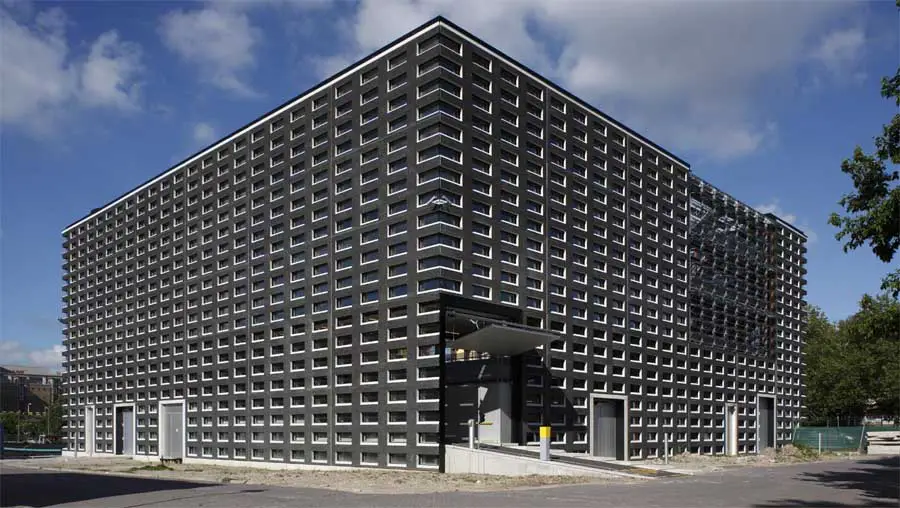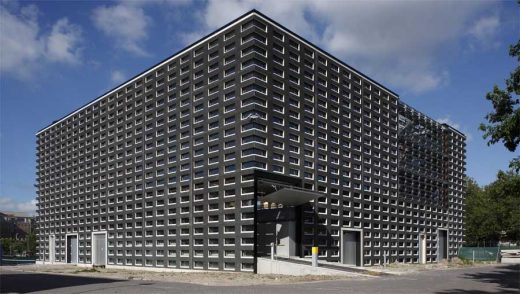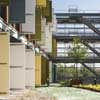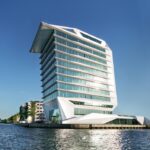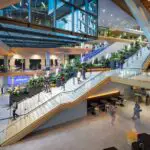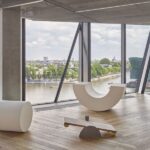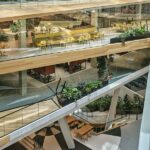Koninklijke Marechaussee, Amsterdam Building Project Photo, News, Holland Design Images
Koninklijke Marechaussee Amsterdam
KMAR Development, The Netherlands design by Wansleben-Architekten, Germany
post updated 27 April 2024
Design: Wansleben-Architekten
Koninklijke Marechaussee : KMAR-building on the Navy-Barracks in Amsterdam. As a administrative building for the Dutch military police it is nominated for the Golden Amsterdams Architecture Award (Gouden AAP2009) direct after completion.
New administration building of the royal Marechaussee on the Navy-Barracks in Amsterdam, Kattenburgerstraat 7
29 Jan 2010
Koninklijke Marechaussee Amsterdam – KMAR
Numerous ambitious architectural projects, among others on Java-Ijland, Zeeburg and on the Westerkade, developed a specific Amsterdam architecture along its different waterfronts during the past years. An area at the Oosterdock, adjoining to the National Maritime Museum (Scheepvaartmuseum) and near the central station, awaked the desires of the Amsterdam municipality to remedy the chronic shortage of residential buildings in the city centre.
However, the area’s owner – the Dutch Navy – defended itself against municipal claims. While the Navy used the area ineffectively, it has prestigious and historically significance for them: Here the Dutch Navy took, in the course of the foundation of the VOC (United Dutch East Asia Company), its beginnings.
On behalf of the Navy, the Cologne architect Norbert Wansleben developed a concept based on local-historical and typological metaphors that extrapolate the military as well as the recent architectural tradition of Amsterdam: He sketched a fortress that communicates with the city.
Coming from the city centre, crossing one of the many Amsterdam bridges, the National Maritime Museum opens an urban sequence –on one side bordered by water, on the other side by a wall. Responding to the Maritime Museum, Wansleben’s building now makes the spatial sequence complete. Like the National Maritime Museum the new building is a cube.
The concrete facade is covered with dark natural stone and 1750 windows of the identical dimension, arranged in a strict grid. While the “well-fortified construction“ thereby becomes intransparent -there are on view height consciously no windows- it still communicates: At daytime the glass reflects the water movements and the surrounding, at night the facade changes its patterns according to illuminated rooms.
Wansleben says: “It is for me architecture is about ambivalences between protection and presentation, meaning and riddles, order and chaos, formal and informal. Such ambivalences stimulate a second, repeated view. The curiosity of the viewer is the real aim: The building makes an unpredictable difference for those who experience it.“
The subject of the fortress extrapolates itself in the structural characteristics: The authorised users access the building via ramps and folding gates reaching a two-level inner courtyard: on the lower level, this court is a parking level, on the higher level it is a garden covered with greenery. Here the building opens by generous windows; accordingly the offices are light-flooded. Colourfully glazed wooden panels engender recollections of northern summers. While the outer facade wraps the building as a protecting shield and creates distance, the inner courtyard promises a pleasant working environment.
The architectural public of Amsterdam distinguished Wanslebens building by the nomination for the Amsterdam Architecture Price in 2009 (Gouden AAP 2009); and the Navy was so contented about its fortress that it staged an “assault” – with real tanks and (loud, but harmless) grenades.
Design explanation
The “KMAR – Koninklijke Marechaussee” can be described best as a police organisation with military status. Organizationally it is since 1998 beside the army, the navy and the air force the fourth independent organisation unity of the Dutch ministry of defence.
In this design we tried to plumb the tension between
Rule + Exception
Repetition + Variation
Statics + Kinetics
Surface + Structure
Context + Object
Meaning + Riddle
Group + Individual
Order + Chaotik
Variety + Simplicity
In this we see an expression for the ambivalent situation of the users, between the institution and the individual whom you serve, between the policeman as a function in the uniform and the person in it, between the society which demands security, but which looks at security forces doubtfully.
Through this the building receives meaning and can step in a dialogue with the viewer and user. It speaks to the town which has produced it.
It provides a message about its identity to veil this also at the same time.
One figures to understand the building very fast, however, with closer looking the uncertanties rise again. Is the building dark or bright? Is it closed or transparent? How many floors does it have actually? These questions cannot be answered any more unambiguously. Additionally different lighting conditions and weather cause different impressions.
The viewer forms his own judgment which is valid however only for the moment. The next encounter, the second look, leads to other perceptions.
To mark the project in his meaning of utilisation, the typology of the fortress was chosen. Characteristics like the access about a ramp by a folding gate on a higher situated court or the spiral staircases between the floors are to be led back here.
In terms of Town Planning it is a counterpart to the National Maritime Museum (Scheepvaartmuseum) and forms thus the begin and the end of a spatial urban sequence.
Koninklijke Marechaussee images / information from Wansleben-Architekten
Location: Koninklijke Marechaussee, Amsterdam, The Netherlands
Architecture in Amsterdam
Amsterdam Architecture Designs – chronological list
KMAR Building – design by Zvi Hecker Architekt

picture from architect office
Amsterdam Architecture – contemporary building information
Amsterdam Buildings – historic building information
Dutch Architecture
Contemporary Dutch Architecture – architectural selection below:
Netherlands Architecture Designs – chronological list
The Traveller
Interior design: Powerhouse Company
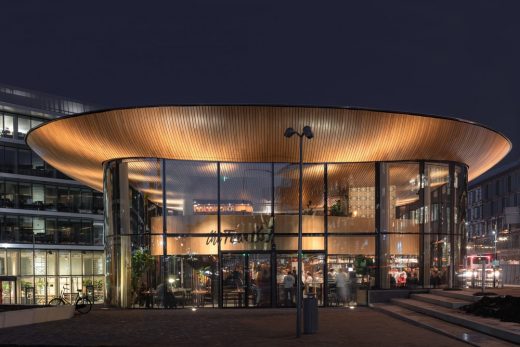
photograph © Sebastian van Damme
The Traveller Culinary Pavilion
Comments / photos for the Koninklijke Marechaussee Amsterdam – KMAR-building Architecture design by Wansleben-Architekten page welcome
Website: Koninklijke Marechaussee Amsterdam

